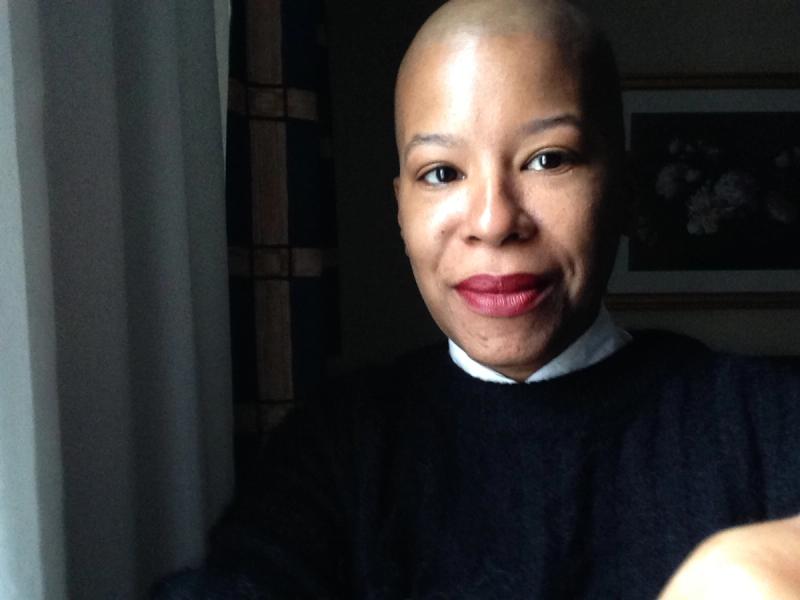
In “Ordinary Notes,” Christina Sharpe Weaves a Profound Portrait of Black Life
“I have collected lines (and they have collected me).”
Taking notes, both longhand and digital, is a long-standing habit of mine. My never-ending to-do list stretches across sticky notes, the backs of envelopes, and several apps on my phone. I take notes when visiting art exhibitions, when I need to capture ideas for poems, or to keep track of songs to sing at karaoke. Throughout my school years, I took notes in various subjects to help clarify lessons: mnemonics for science and math, important dates from American and world history, feedback from my classmates during creative writing workshops.
Note-taking is a form of research and a way of cataloging thoughts, ideas, and lived moments. We take notes in order to remember, to return to important information, or simply to mark the fact that something exists—or once did. I’m curious if these intentions are why Christina Sharpe, a professor of English literature and Black studies at York University in Toronto, set out to write her latest book, Ordinary Notes (Farrar, Straus and Giroux)—and if she began with a jotted-down line, a thought or a recollection, and continued her collection until a thread could be woven between her words.
“Note 102” from the book, whose opening line begins this review, is itself a collection of lines from novels and poems, some relating to one another and some with meanings that lie solely with Sharpe.
Through 248 notes spanning 392 pages, Sharpe weaves together thoughts on Black life and the lived Black experience. In some entries, she reaches into the past, both public and personal; with other notes, we become bystanders to events in Sharpe’s life in real time. She begins a trail of thought on one page, then shifts to a new note, only to pick up the original thought several notes later. Across this note-taking opus, Sharpe explores acts of racial violence, the process of viewing art, family memories both tender and vicious, and observations on literature, politics, music, grief, and joy.
In an interview with the journalist Jenna Worthman, Sharpe says that the idea for Ordinary Notes came from Toni Morrison’s novel Beloved, in which the character Hi Man signals the beginning and end of days spent in a prison in Georgia by calling out to his fellow prisoners. Hi Man’s voice marks the end of the sexual assault that takes place throughout the night and the beginning of the physical labor that the prisoners must endure during the day. This “note”—Hi Man’s calls—launched Sharpe’s investigation that the following notes document.

Sharpe, who’s also the author of In the Wake: On Blackness and Being (2016) and Monstrous Intimacies: Making Post-Slavery Subjects (2010), has become widely known for her work that examines the intricacies of Black life, past and present, through a lens that seeks to investigate how the institution of slavery and its wake continue to haunt Black individuals and communities. And yet, despite this haunting, there are moments of celebration and beauty and wonder and joy. In a way, Ordinary Notes continues the work of In the Wake, giving it a new shape. Pulling from personal interactions and historical examples, Sharpe’s notes are a catalog of intersecting reflections bound together to form a new whole.
“Note 94: Encounter” opens with “What we must prepare for every single time we leave the house,” and then incorporates a section of Dionne Brand’s (who is also Sharpe’s partner) long poem “Ossuaries,” making note of the everyday terror that might await Black bodies outside their homes. This terror, as well as thoughts on violence, opens the book, but only as an entry point to unfolding other memories and observations.
I noticed the importance of photography and image-making throughout the book. “In my memory there are two photographs,” “Note 5” begins, as Sharpe takes us through childhood recollections of seeing a photograph of a white boy shouting in rage, “angry about Black people,” and an image of Elizabeth Eckford, one of the Little Rock Nine, surrounded by a screaming mob, yet still composed. She goes on to discuss famous images of lynchings in “Note 27” and her refusal to research them while writing this book, and then turns to softer family portaits and candids. While “Note 169” does not discuss photography outright, it features an interview with author Gayl Jones that ends with the quote, “Perhaps brutality enables one to recognize what tenderness is.” Tenderness, to Sharpe, is snapshots of nature, or a Black body allowed to rest and simply exist.
Another recurring theme is the idea of the memorial—whom it’s for and what purpose it serves. Sharpe describes an uncomfortable encounter with a white woman who approached her at the National Memorial for Justice and Peace in Montgomery, Alabama, then later offers up a critique of “Amazing Grace” and a desire to see it not as a song that redeems slavery but as one about the actions of John Newton, the white man who wrote it.
The spirit of Sharpe’s mother, Ida Wright Sharpe, also moves throughout this collection. “Note 145”—which might be my favorite in the book—recounts how her mother would wake her by singing “You Are the Sunshine of My Life” by Stevie Wonder over the course of one summer. The note led me to remember similar moments in my own life, particularly acts of love and kindness from my grandparents, who taught me how to cherish the multitudes of Blackness.
Praise for Ordinary Notes to date has frequently mentioned its fragmentation and duality of acting as a memoir and an exploration of Black life, a work that bears witness to both beauty and pain. On one page, readers encounter suffering, and on the next, warmth and humanity. “Note 207” contains an image of Sharpe’s “well-loved, well-read” copy of Beloved, perhaps the first note that created this chain. By the end of reading Ordinary Notes, my copy mirrored this image: flagged pages marking the lines I wanted to share here—yet another form of note-taking.